|
Il
n'y a qu'une chose qui intéresse l'homme, Renoir, Pierre Auguste
(1841-1919), French Impressionist painter,
is recognized as one
of the greatest and most independent painters of his period, and is noted for the harmony
of his lines, the brilliance of his color, and the intimate charm of his wide variety of
subjects. Unlike other Impressionists he was as much interested in painting the single
human figure or family group portraits as he was in landscapes; unlike them, too, he did
not subordinate composition and plasticity of form to attempts at rendering the effect of
light. |
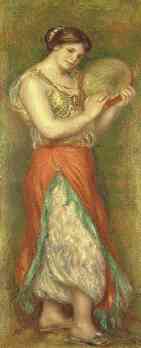 |
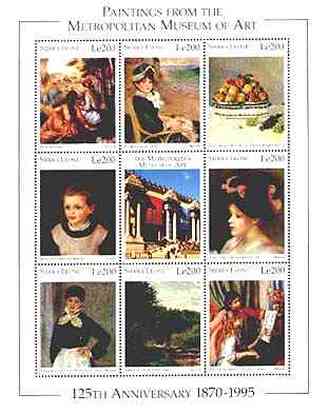 |
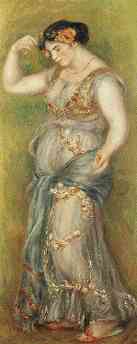 |
Renoir was born in Limoges on February 25, 1841. As a child he worked in a porcelain factory in Paris, painting designs on china; at 17 he copied paintings on fans, lampshades, and blinds. Between 1862-1863 he studied painting formally at the academy of the Swiss painter Charles Gabriel Gleyre in Paris. Renoir's early work was influenced by two French artists, Claude Monet in his treatment of light and the Romantic painter Eugène Delacroix in his treatment of colour.
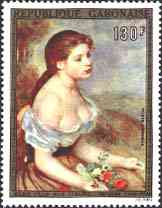 |
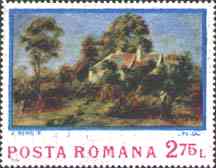 |
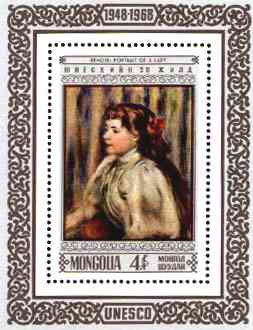 |
Renoir first exhibited his paintings in Paris in 1864, but he did not gain recognition until 1874, at the first exhibition of painters of the new Impressionist school. Outstanding examples of his talents as a portraitist are Madame Charpentier and Her Children (1878, Metropolitan Museum of Art, New York) and Jeanne Samary (1879, Louvre).
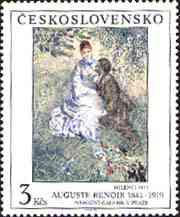 |
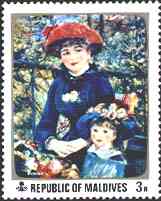 |
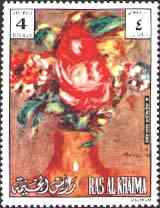 |
 |
Renoir fully established his reputation with a solo exhibition held at the Durand-Ruel Gallery in Paris in 1883. In 1887 he completed a series of studies of a group of nude female figures known as the Bathers (Philadelphia Museum of Art). These reveal his extraordinary ability to depict the lustrous, pearly colour and texture of skin and to impart lyrical feeling and plasticity to a subject; they are unsurpassed in the history of modern painting in their representation of feminine grace.
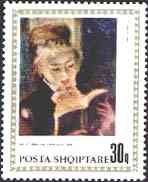 |
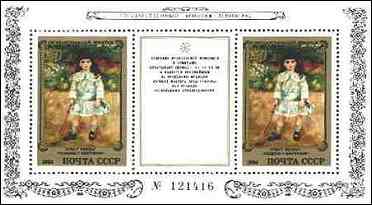 |
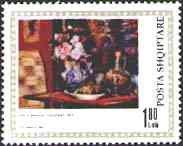 |
During the last 20 years of his life Renoir was crippled by arthritis; although unable to move his hands freely, he continued to paint by using a brush strapped to his arm. Renoir died at Cagnes, a village in the south of France, on December 3, 1919.
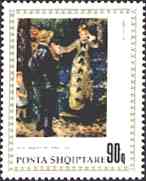 |
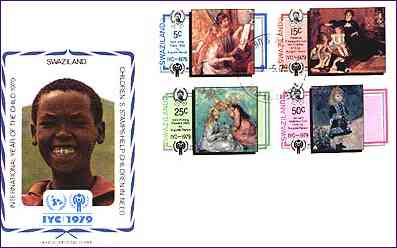 |
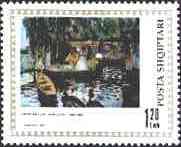 |
Other notable paintings by Renoir include La Loge (1874, Courtauld Institute Galleries, London); Woman with Fan (1875) and The Swing (1875), both in the Louvre, Paris; The Luncheon of the Boating Party (1881, Phillips Collection, Washington, D.C.); and Vase of Chrysanthemums (1895, Musée de Beaux-Arts, Rouen)-one of the many still lifes of flowers and fruit he painted throughout his life. After Microsoft Encarta 1996.
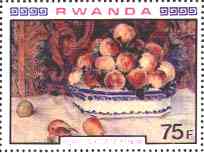 |
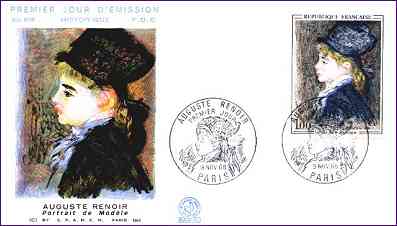 |
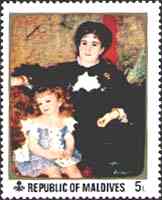 |
Background: The Seine at Asnières (La Yole), The National Gallery, London, Great Britain.
Link: Renoir at Hermitage Museum, St. Petersburg
